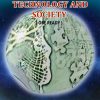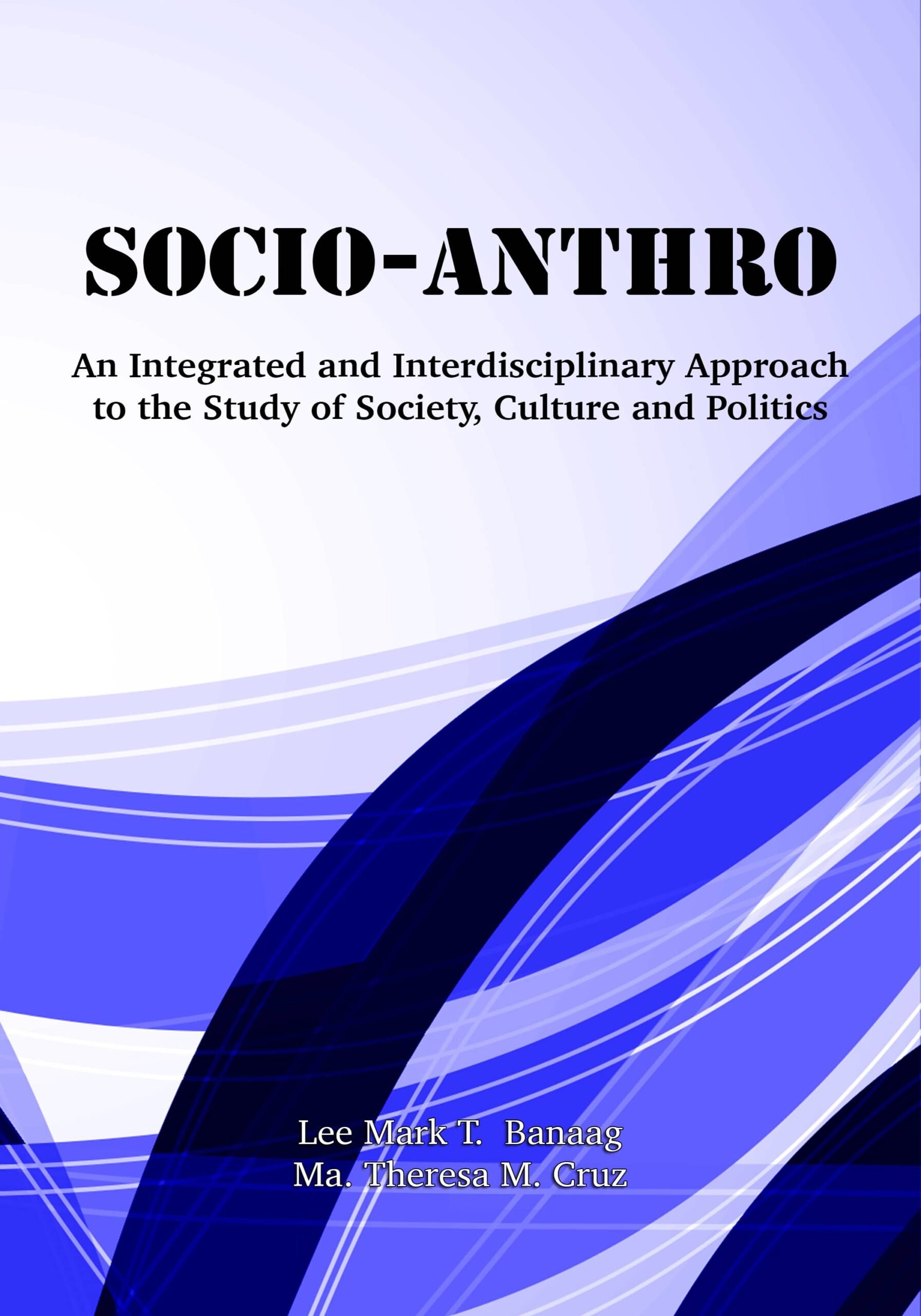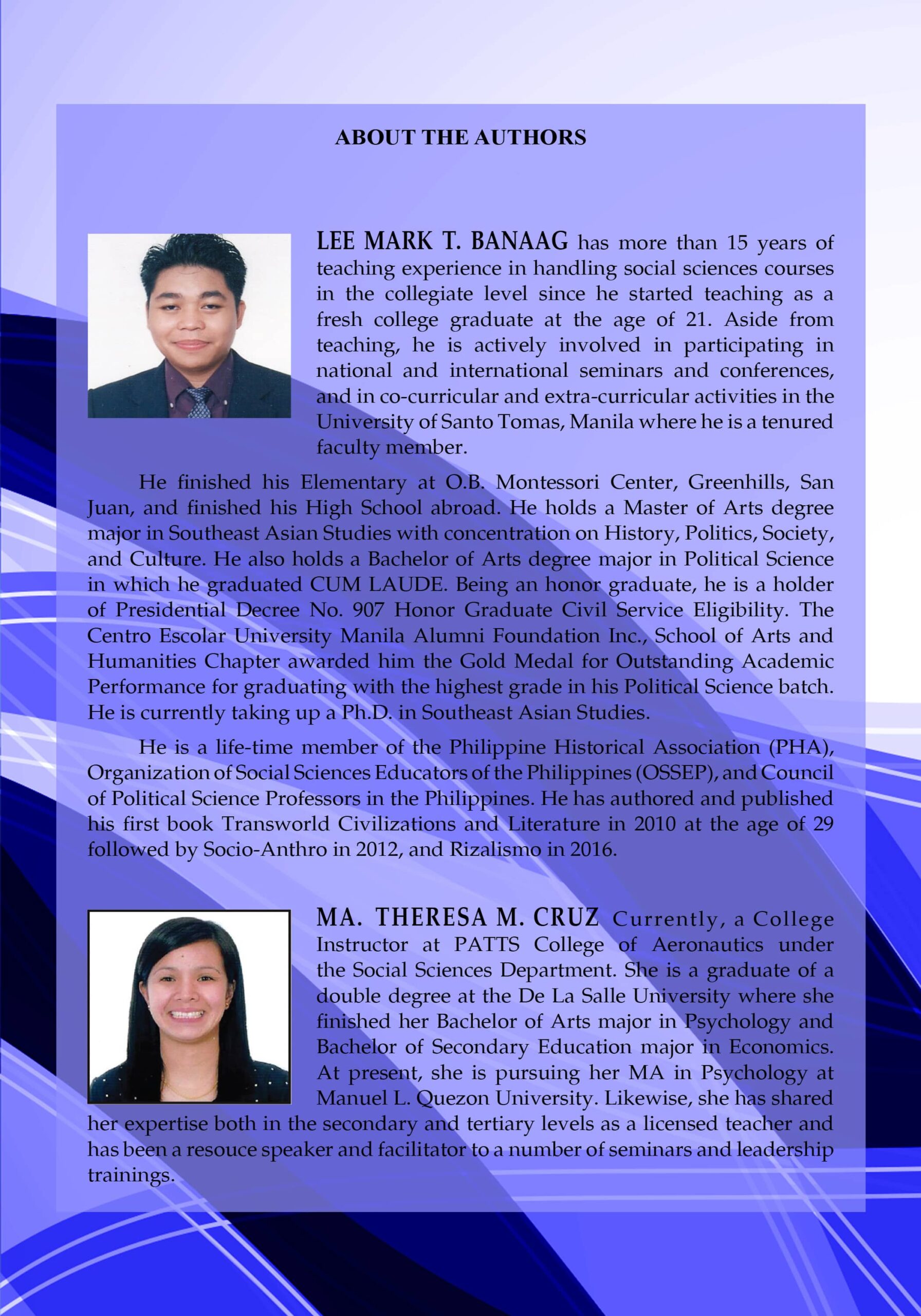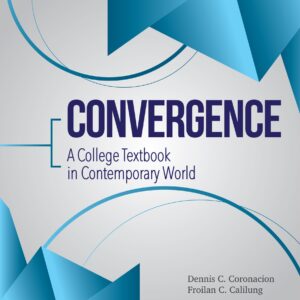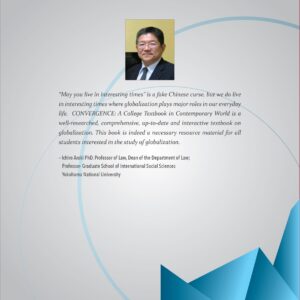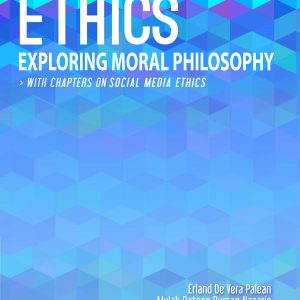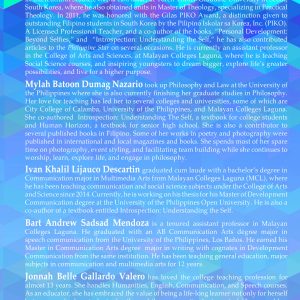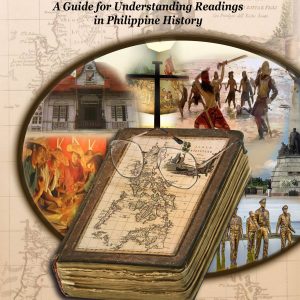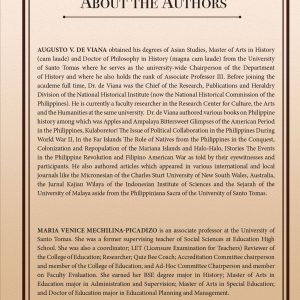Socio – Anthro
₱375.00
ISBN: 978–621–409–045–7
Author: Lee Mark T. Banaag
Ma. Theresa M. Cruz
Description
ISBN: 978–621–409–045–7
Author: Lee Mark T. Banaag
Ma. Theresa M. Cruz
Additional information
| Book Type | Hard Copy, e-book |
|---|
Table of Contents
Table of Contents
Dedication……………………………………………………………………………………………………………. iii
Foreword………………………………………………………………………………………………………………… v
Acknowledgements………………………………………………………………………………………………… vii
List of Images…………………………………………………………………………………………………………. xv
List of Figures…………………………………………………………………………………………………………. xvi
part I
Introduction to Sociology and Anthropology
chapters 1 Sociology and Anthropology
Learning Objectives………………………………………………………………………….. 2
Sociology, Anthropology and Political Science: An Overview…………… 2
Start-Up Activity……………………………………………………………………………….. 2
Linking Sociology, Anthropology and Political Science…………………….. 5
Test Yourself……………………………………………………………………………………… 7
Relevance of Sociology, Anthropology and Political Science……………… 7
Sociology, Anthropology and Political Science: Its Scope………………….. 9
Sociology, Anthropology and Political Science: Its Divisions…………….. 10
Seven Areas of Concentration in Sociology……………………………………….. 10
Four Fields of Discipline in Anthropology ……………………………………….. 10
Fields of Political Science………………………………………………………………………..10
Development and Forerunners of Sociology,
Anthropology and Political Science………………………………………….. 11
Sociology………………………………………………………………………….. 11
Anthropology……………………………………………………………………. 14
Political Science………………………………………………………………… 17
Endnotes ………………………………………………………………………………………….. 22
Enrichment Activity………………………………………………………………………….. 23
Chapter Test……………………………………………………………………………………… 25
2 Approach, Perspectives, and Methods
in Sociology and Anthropology
Learning Objectives………………………………………………………………………….. 28
Start-Up Activity……………………………………………………………………………….. 28
Sociological Imagination…………………………………………………………………… 28
Sociological Perspective…………………………………………………………………….. 30
Rules of Sociological Method……………………………………………………………. 31
Research Methods in Sociology and Anthropology…………………………… 33
Endnotes ………………………………………………………………………………………….. 34
Enrichment Activity………………………………………………………………………….. 37
Chapter 2 Test…………………………………………………………………………………… 39
part II
Cultural Dimension of Man
3 Culture
Learning Objectives………………………………………………………………………….. 42
Start-Up Activity……………………………………………………………………………….. 42
Concept of Culture……………………………………………………………………………. 43
Elements of Culture………………………………………………………………….. 44
Values System and Orientation………………………………………………………….. 46
Test Yourself……………………………………………………………………………………… 47
Asian and Filipino Values………………………………………………………………….. 48
Cyberculture……………………………………………………………………………………… 50
Characteristics and Functions of Culture…………………………………………… 51
Cultural Variation and Perception…………………………………………………….. 52
Test Yourself……………………………………………………………………………………… 53
Ethnocentrism and Cultural Relativism…………………………………………….. 53
Theoretical Perspectives on Culture…………………………………………………… 54
Personality………………………………………………………………………………………… 59
Concept of Personality……………………………………………………………… 59
Cultural Determinism on Personality………………………………………. 60
Endnotes ………………………………………………………………………………………….. 62
Enrichment Activity………………………………………………………………………….. 65
Chapter 3 Test…………………………………………………………………………………… 67
4 Human Language
Learning Objectives………………………………………………………………………….. 70
Start-Up Activity……………………………………………………………………………….. 70
Relationship of Language and Culture ……………………………………………… 71
Discipline of Linguistics
Linguistics and Language…………………………………………………………. 72
Variations of Human Language………………………………………………… 74
Scope of Linguistics………………………………………………………………….. 75
Language Family and Ethno-linguistic Groups
Language Families……………………………………………………………………. 75
Philippine Ethno-linguistic Groups…………………………………………………… 76
Development of Human Speech and Language ………………………………… 78
Divine Gift of Protolanguage…………………………………………………………….. 78
Anatomical Evolution……………………………………………………………………….. 78
Forceful Adaptation………………………………………………………………………….. 79
Test Yourself……………………………………………………………………………………… 80
Cyberlanguage………………………………………………………………………………….. 81
Functional Theories of Language………………………………………………………. 82
Endnotes ………………………………………………………………………………………….. 83
Enrichment Activity………………………………………………………………………….. 85
Chapter 4 Test…………………………………………………………………………………… 87
5 Cultural Heritage
Learning Objectives………………………………………………………………………….. 90
Start-Up Activity……………………………………………………………………………….. 90
Discipline of Archeology
Introduction to Archeology……………………………………………………… 91
Sources of Archeological Evidences………………………………………….. 92
Cultural Periods in Prehistoric Archeology ………………………………………. 93
Cultural Heritage……………………………………………………………………… 95
Importance of Cultural Heritage Sites ……………………………………… 95
Cultural Heritage Conservation……………………………………………….. 95
Endnotes ………………………………………………………………………………………….. 98
Enrichment Activity………………………………………………………………………….. 99
Chapter 5 Test…………………………………………………………………………………… 101
6 The Human Race
Learning Objectives………………………………………………………………………….. 104
Start-Up Activity……………………………………………………………………………….. 104
Overview of Man ……………………………………………………………………………… 105
Evolution of Man
Theory of Evolution………………………………………………………………….. 105
Mechanisms in Evolution…………………………………………………………. 107
Human Ancestry ……………………………………………………………………………… 107
Test Yourself……………………………………………………………………………………… 109
Race and Ethnicity `
Concept of Race and Ethnicity…………………………………………………. 109
Classification of the Human Beings………………………………………….. 110
Social Implications of Racism……………………………………………………………. 112
Peopling of the World……………………………………………………………………….. 113
Emergence of Civilization and Civilized Man……………………………………. 114
Endnotes ………………………………………………………………………………………….. 116
Enrichment Activity………………………………………………………………………….. 117
Chapter 6 Test…………………………………………………………………………………… 119
part III
Social Dimension of Man
7 Social Structure, Social Processes and Socialization
Learning Objectives………………………………………………………………………….. 122
Start-Up Activity……………………………………………………………………………….. 122
Socialization
Socialization Process………………………………………………………………… 123
Agents of Socialization……………………………………………………………… 123
Collective Behavior
Understanding Collective Behavior………………………………………….. 125
Theories of Collective Behavior………………………………………………… 125
Forms of Collective Behavior……………………………………………………. 126
Test Yourself……………………………………………………………………………………… 129
Social Deviance and Social Control…………………………………………………… 130
Test Yourself……………………………………………………………………………………… 130
Social Deviance…………………………………………………………………………………. 130
Theories on Deviance………………………………………………………………………… 131
Social Control…………………………………………………………………………………… 134
Endnotes ………………………………………………………………………………………….. 138
Enrichment Activity………………………………………………………………………….. 139
Chapter 7 Test…………………………………………………………………………………… 141
8 Social Organization and Social System
Learning Objectives………………………………………………………………………….. 144
Start-Up Activity……………………………………………………………………………….. 144
Society………………………………………………………………………………………………. 144
Components of Social Structure……………………………………………….. 145
Test Yourself……………………………………………………………………………………… 148
Sociological Frameworks of Society………………………………………………….. 148
Social Organization and Social System……………………………………………… 151
Social Group
Concept of Social Group………………………………………………………….. 152
Characteristics of a Social Group……………………………………………… 152
Classifications of Social Groups……………………………………………….. 152
Group Formation and Dynamics
Group Formation…………………………………………………………………………. 155
Group Dynamics……………………………………………………………………… 156
Human Clusters……………………………………………………………………….. 158
Endnotes ………………………………………………………………………………………….. 160
Enrichment Activity………………………………………………………………………….. 161
Chapter 8 Test…………………………………………………………………………………… 163
9 Familial Institution
Learning Objectives………………………………………………………………………….. 166
Start Up Activity……………………………………………………………………………….. 166
Concept of Social Institution…………………………………………………………….. 167
Concept and Functions of Family……………………………………………………… 167
Rights and Obligations between Husband and Wife…………………. 168
Parental Authority……………………………………………………………………. 169
Family Structures……………………………………………………………………… 169
Test Yourself……………………………………………………………………………………… 171
Courtship and Marriage……………………………………………………………………. 172
Marriage Partner Selection Practices………………………………………… 173
Sanctity of Marriage and Family………………………………………………. 175
Catechism of the Catholic Church on the Family………………………………. 176
Annulment and Legal Separation………………………………………………………. 176
Crimes against Marriage…………………………………………………………………… 178
The Stereotypical and Typical Filipino Family…………………………………… 178
From Stereotypical Traditional View…………………………………………………. 178
To Typical Liberal View…………………………………………………………………….. 179
Endnotes ………………………………………………………………………………………….. 182
Enrichment Activity………………………………………………………………………….. 183
Chapter 9 Test…………………………………………………………………………………… 185
part IV
Social Institution
10 Political and Economic Institutions
Learning Objectives………………………………………………………………………….. 188
Start Up Activity……………………………………………………………………………….. 188
Political Organization…………………………………………………………………………… 189
Test Yourself……………………………………………………………………………………… 190
Political Institution……………………………………………………………………………….. 191
Types of Authority………………………………………………………………………………… 191
State and Government………………………………………………………………………….. 193
Concept of State……………………………………………………………………………………. 193
Forms of Government…………………………………………………………………………… 194
Test Yourself…………………………………………………………………………………………. 196
Leadership …………………………………………………………………………………………… 197
Philippine Political Structure and System …………………………………………….. 198
Elections ……………………………………………………………………………………………… 199
Traditional Politics………………………………………………………………………. 201
Partisan Politics…………………………………………………………………………… 202
Political Ideology…………………………………………………………………………. 202
Economic Institution …………………………………………………………………………… 203
Generalized Reciprocity……………………………………………………………………….. 204
Balanced Reciprocity…………………………………………………………………………….. 204
Redistribution………………………………………………………………………………………. 205
Market Exchange………………………………………………………………………………….. 205
Economic Structure and Systems
Economic Structure……………………………………………………………………… 205
Economic Activities…………………………………………………………………….. 206
Economic Systems……………………………………………………………………….. 206
Economic Ideology………………………………………………………………………. 207
Endnotes ………………………………………………………………………………………….. 208
Enrichment Activity………………………………………………………………………….. 209
Chapter 10 Test…………………………………………………………………………………….. 211
11 Educational and Religious Institution
Learning Objectives………………………………………………………………………….. 214
Start Up Activity……………………………………………………………………………….. 214
Educational Institution …………………………………………………………………….. 215
Philippine Education System
Educational Objectives…………………………………………………………….. 216
Types of Education…………………………………………………………………… 216
Measures Taken for Accessible Quality Education……………………. 217
Education Agencies………………………………………………………………….. 219
Structure and Organization (refer to Appendix D)……………………………. 220
Medium of Instruction……………………………………………………………………… 222
Literacy and Competency…………………………………………………………………. 223
Educational Trends and Plans
Current Indicators……………………………………………………………………. 224
Education for All 2015………………………………………………………………………. 224
K+12 Basic Education……………………………………………………………………….. 224
Test Yourself……………………………………………………………………………………… 226
Religious Institution………………………………………………………………………….. 227
Classification of Belief Systems…………………………………………………. 227
Religious Innovation, Deviation, and Fanaticism……………………… 228
Religious Norms………………………………………………………………………. 230
Sources of Religious Authority, Faith, and Teachings………………… 230
Structural Elements of Religion…………………………………………………………. 230
Classification of Religious Organizations…………………………………………… 231
Separation of the Church and State……………………………………………………. 231
Endnotes ………………………………………………………………………………………….. 232
Enrichment Activity………………………………………………………………………….. 235
Chapter 11 Test…………………………………………………………………………………. 237
12 Political and Political Strafication
Learning Objectives………………………………………………………………………….. 239
Start Up Activity……………………………………………………………………………….. 240
Questions for Discussion…………………………………………………………………… 240
Social Stratification in the U.S…………………………………………………………… 240
Social Desirables……………………………………………………………………………….. 240
Wealth and Power……………………………………………………………………………… 241
Prestige……………………………………………………………………………………………… 241
Test Yourself……………………………………………………………………………………… 242
Social Stratification and Social Mobility……………………………………………. 242
Components of Social Stratification…………………………………………. 242
Social Mobility…………………………………………………………………………. 243
Social Stratification: Four Principles
Types of Social Stratification…………………………………………………….. 244
Open versus Closed Systems…………………………………………………….. 244
Social Stratification and Social Inequality………………………………………….. 245
Definition of Social Inequality………………………………………………….. 247
Causes of Social Inequality……………………………………………………….. 247
Effects of Social Inequality……………………………………………………….. 247
Enrichment Activity………………………………………………………………………….. 249
Chapter 12 Test…………………………………………………………………………………. 251
13 Cultural and Social Change
Learning Objectives………………………………………………………………………….. 254
Start Up Activity……………………………………………………………………………….. 254
Cultural Change ……………………………………………………………………………….. 255
Social Change and Globalization
Social Change…………………………………………………………………………… 258
Factors Leading to Social Change…………………………………………….. 258
Test Yourself……………………………………………………………………………………… 259
Theories of Social Change…………………………………………………………………. 260
Globalization…………………………………………………………………………………….. 260
Globalization Process………………………………………………………………………… 260
Impact of Globalization…………………………………………………………………….. 261
Environmental Issues………………………………………………………………………… 262
Global Warming……………………………………………………………………………….. 262
Pollution ………………………………………………………………………………………….. 262
Loss of Habitats…………………………………………………………………………………. 262
Endnotes ………………………………………………………………………………………….. 264
Enrichment Activity……………………………………………………………………………… 265
Chapter 13 Test…………………………………………………………………………………….. 267
Appendices
Appendix A—George Murdock’s 70 Cultural Universals…………………… 269
Appendix B—Language Families………………………………………………………. 270
Appendix C—Negrito Languages Spoken in the Philippines……………… 272
Appendix D— Structure of the Philippine Education System……………. 274
Appendix E— Decoding the Twelve Days of Christmas…………………….. 275
Bibliography……………………………………………………………………………………………………….. 277
